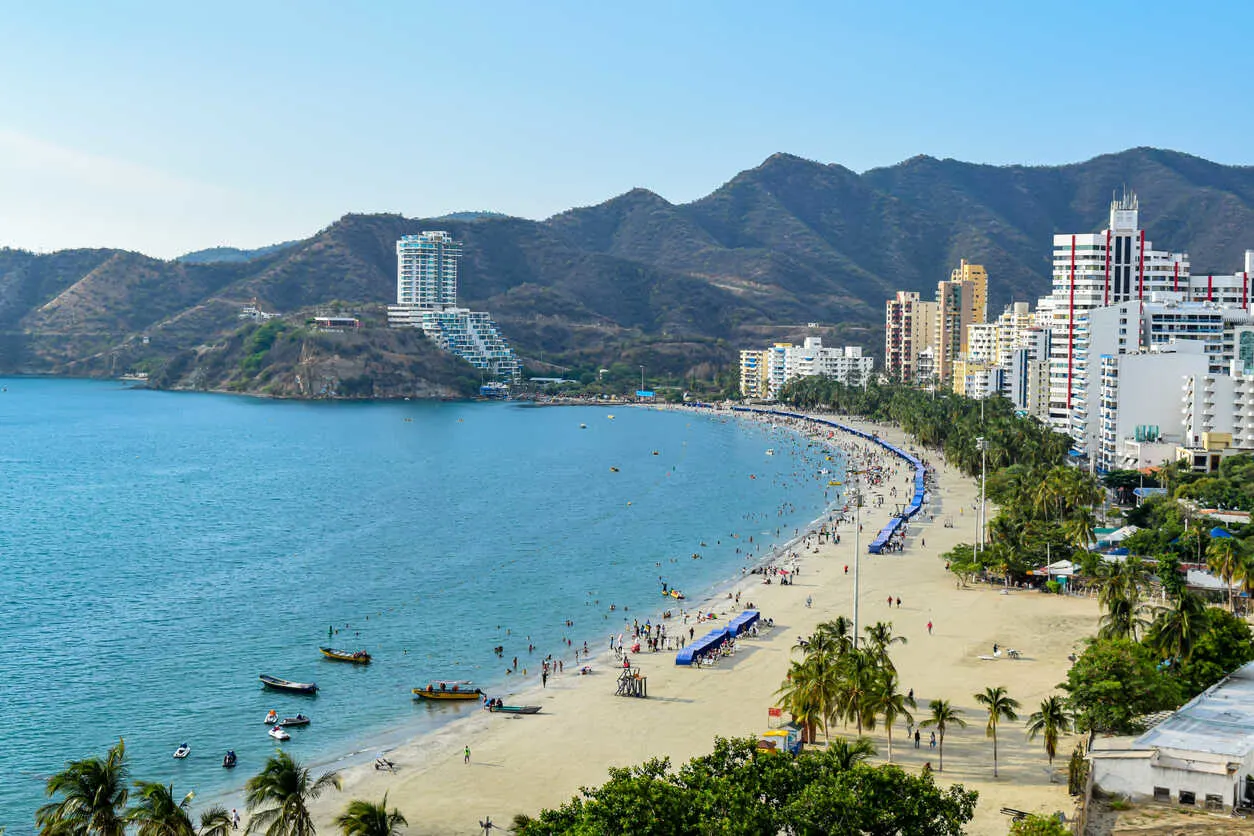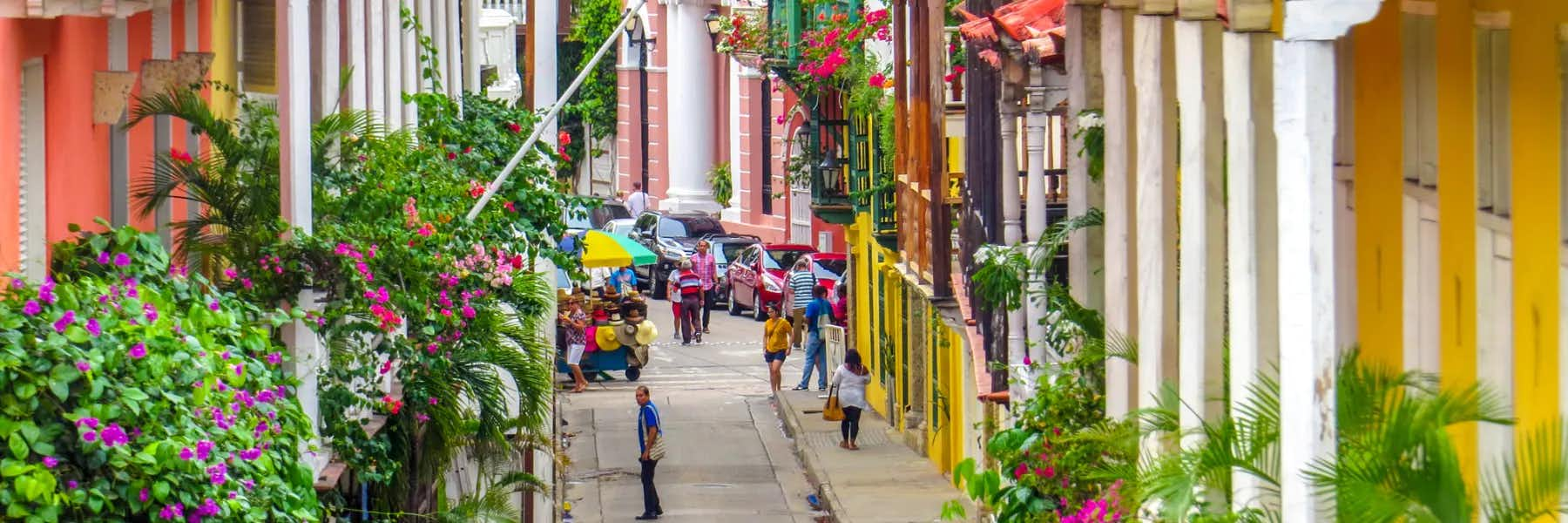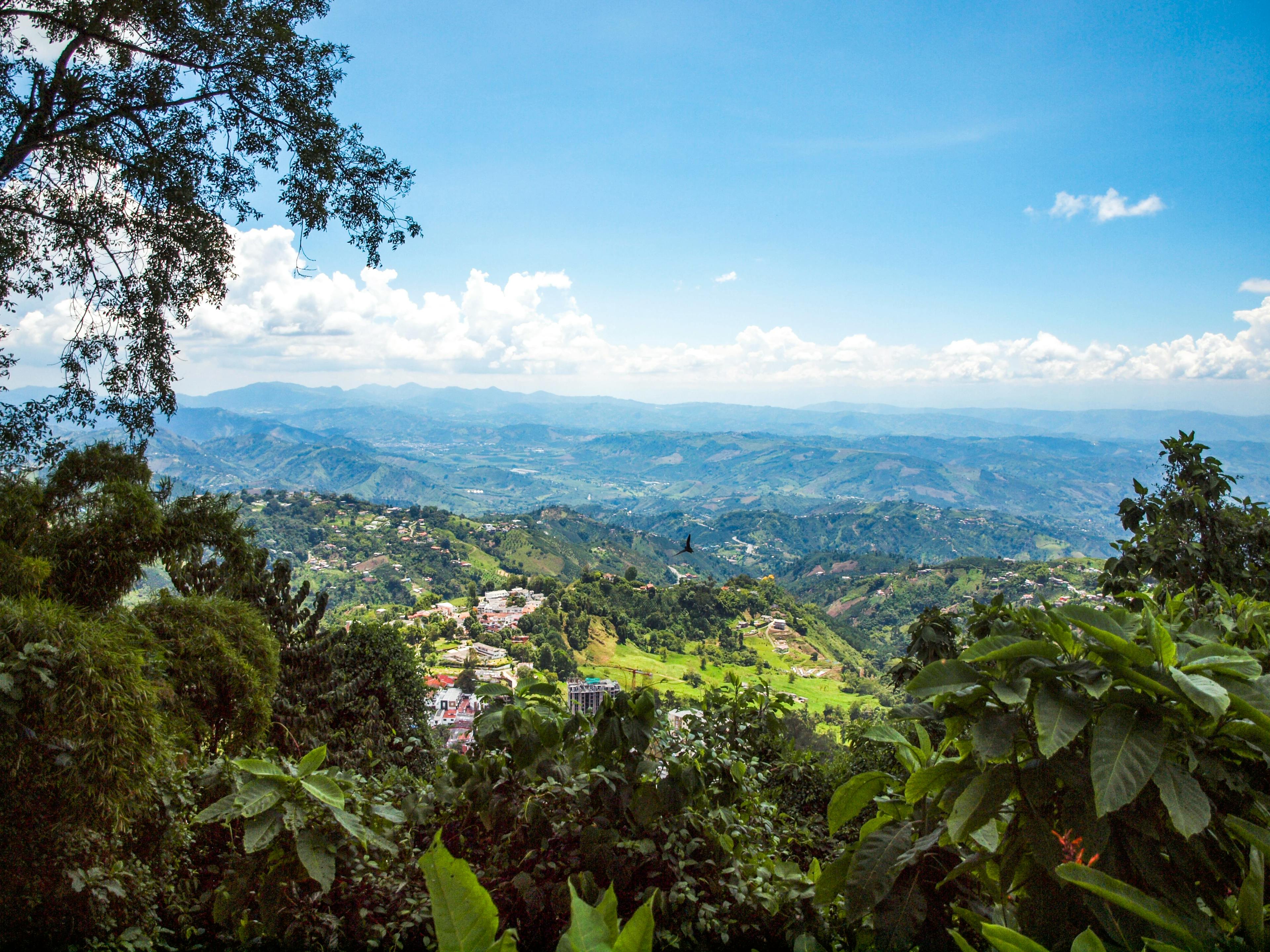Visa and residency in Colombia can be a complicated process, but it doesn’t have to be painful. In 2022, the government streamlined its immigration system and introduced new visa options, requirements, and fees for foreign nationals.
If you’re considering living long-term or retiring in the country, the options below can help you decide what’s right for you. The article covers everything from tourist visa extensions to citizenship applications, and provides important details about cost, requirements, and documentation.
Temporary Visas (V-Type Visa)
Visitor visas allow any foreign national to visit Colombia temporarily, allowing them to stay for an extended period without the intention of establishing themselves permanently. There are many types of V-class visas: tourist, rentista, religious, digital nomad, business, and more.
While retirees may ultimately want to obtain a longer visa period, the V-type visa can allow them to stay in the country for up to six months and learn more about Colombia. Consider the following four best options for retirees wishing to visit the country:
A tourist visa will allow you to stay up to 180 days per calendar year. Visitors from most countries, including the US, Canada, and the UK, can enter Colombia without a visa and typically receive a 90-day stamp upon arrival. To stay longer, you must apply for a 90-day extension before your initial stamp expires.
A rentista visa is intended for foreigners who receive regular passive income such as a pension, rental income, interest/dividends from investments, disability payments, an insurance settlement, or annuity payments. With this visa, you can live in Colombia for up to two years but must not work or generate business income while in Colombia. To qualify for a rentista visa, you’ll need to prove a monthly income of at least $2,577.
The Business visa is a good choice if you’re planning to open a business in Colombia and would like to explore the market before committing. It is valid for up to two years and allows you to make multiple entries into the country.
Digital nomad can cover up to 2 years, but you’ll need to show that you make about $900 per month working remotely for a foreign company. You may be able to meet the income threshold by working part-time. This option is ideal for semi-retired people who haven’t yet decided if they want to settle in Colombia but want to extend their stay and have the option to travel around the country and other parts of the globe.
Living in Colombia for several months can help you understand what it has to offer, how administrative processes work, and which parts of the country you prefer. If you’re undecided about moving to Colombia permanently or still sorting out your finances back home, this should be your first step.
Documentation
The documentation you must provide will depend on the type of visa you apply for. For example, to extend your tourist visa, you will need a valid passport, proof of health insurance, a local address, and proof of your return ticket. You could also be asked to prove that you can cover your living expenses during your stay in Colombia. Rentistas have the same requirements as tourists, but must also submit a criminal background check and show they make at least $2,577 per month.
To obtain a business visa, you’ll need a valid passport, proof of health insurance, a local address, a business plan, bank statements to show you can cover your living expenses, and a letter explaining your business plans. As a digital nomad, you must provide the same documents as a tourist or rentista and will be asked to submit letters from your employer(s) and proof that you make more than $900 a month. A friendly tip: To get the best possible outcome, make sure your passport expiration date is past the two-year duration of your potential stay.
Your visa should indicate how many days you can stay in the country and how often you can come and go. Overstaying is never a good idea, even if expats with good intentions tell you otherwise. If you’ve stayed after your visa’s expiration, the immigration office will make you pay a fine when you leave. The amount will vary depending on the length of time you overstayed and the mood of the immigration officer. It may also impact how difficult it is to get another visa later on.
Permanent Residency (M-Type and R-Type)

Migrant Visa (M type)
The M visa is meant for foreigners who want to enter Colombia with the intention of making it their long-term or permanent home. This visa allows people with beneficiaries, such as a spouse or child, to include them on their application. The M-type Visa offers those who don’t yet meet the conditions for an R-type visa a path toward permanent residency. The most common types of migrant visas are retirement, real estate, marriage, business, and retiree. The retirement visa (M-type) is one of the more attractive types of migrant visas available. Typically, migrant visas are granted for up to three years, but to keep the visa active you’ll need to be in the country at least once every six months.
Pensioner visas (retirement visas) allow applicants to migrate to Colombia and live off their retirement income. Real estate investor visas are for foreigners who have made a Foreign Direct Investment or purchased a property valued more than 650 times the minimum monthly wage in Colombia. The minimum amounts needed to qualify for an M-type visa are subject to change. They are based on formulas that take into account the rising minimum wage of Colombian citizens. You should always consult the official website of the Ministry of Foreign Affairs to confirm the current amount.
Resident Visa (R type)
Colombia’s R-type visa is intended for foreigners who have lived there for several years and want to make it their permanent home. It has several benefits; for example, it can provide access to the national healthcare system and insurance program and doesn’t impose the same work restrictions on V-type and M-type visas. After three years of receiving a migrant visa (M-type), you can renew the visa, and once you reach the five-year mark, you will become eligible for permanent residency. R visa holders can work, invest money, and purchase and sell assets with far fewer restrictions than migrants and visitors.
In Colombia, you must accumulate time lived in the country before applying for permanent residency. There are a few scenarios where you can receive a resident visa: if you’re the parent of a Colombian citizen by birth, renounced your Colombian nationality in the past, accumulated time of permanence through other visa types, made foreign investment in a Colombian company (investment visas), or your spouse is a Colombian citizen or permanent resident (marriage visa).
Documentation
When it comes to your M-type and R-type visa application, you may want to work with a legal advisor who speaks English and Spanish and can guide you through the process of preparing and submitting the right documents. The basic requirements for the M-type visa application include your passport, digital photo (3x4 cm), bank statements, and your health insurance policy. Retirees applying for the pensioner visa must provide proof of their pension benefits, and real estate investors must share a copy of their registered foreign investment certificate.
For R-type visas, the following documents are needed:
A valid passport
A digital photo (3x4 cm)
A copy of your tourist stamps, extensions, and other visas received in the past
A copy of your foreign ID card
A notarized letter certifying your pension benefits or monthly revenue
Criminal background checks from your home country and any countries you have resided in the past three years
A letter from a doctor certifying that you are in good physical and mental health (for the pensioner visa)
A health insurance policy
If applying for a visa from your home country, you may receive assistance from the nearest Colombian Embassy or Consulate and can pick up your visa after it is approved.
Citizenship
If you’ve lived in Colombia for several years, you probably consider it your home. Some foreign-born residents decide to apply for citizenship so they can have access to the same benefits Colombians do. In addition to giving you the right to vote, becoming a citizen protects you from deportation and can give you a sense of stability as you settle into your new life. As a Colombian citizen, you can also move freely between Mercosur member states in South America using only your Colombian ID.
As a foreigner, you must accumulate five years of residency under your M-type visa. Latin American or Caribbean citizens who have lived continuously in Colombia for one year are eligible to apply for citizenship. For Spanish citizens, the period is two years. If you marry a Colombian national or have Colombian children, you can apply after only two years. To start the naturalization process, you must prove that you are a legal resident.
Your citizenship application involves collecting several documents and answering questions about your decision to seek out Colombian citizenship.
Official application form submitted to the Minister of Foreign Affairs
The reasons motivating your request
Your most recent address
A police background check
Proof of civil status of any dependent if they are included in your applications
A certified copy of your Foreign ID card and Resident card
A notarized copy of your passport, birth certificate, or registration.
A letter from your employer (if this applies).
A copy of your Chamber of Commerce certificate if you are a business owner in Colombian
Copy of marriage certificate if married to a Colombian
Men under 50 years of age must comply with military status requirements
Five photographs (4x5 cm) on a blue background
Official translations of documents into Spanish
Basic knowledge of Colombia’s political constitution, history, geography, and language (Spanish).
Note that if you have a high school or university degree or are over 65, you are exempt from the last requirement on this list. Once you file your application, if you meet the requirements, you‘ll be interviewed by an agent from the Ministry of Foreign Affairs who will decide whether or not to grant you citizenship.
Processing Time
All visa applications can be completed online through the Ministry of Foreign Affairs (Ministerio de Relaciones Exteriores or Cancilleria). You can check their status using the link and passcode in the confirmation email you receive. If you plan to apply for your V-type visa from inside Colombia, provide both the arrival stamp and the front page of your passport at the time of your visa application. Despite the government website saying otherwise, V-type visas may take 20 to 30 days to be approved. If any documents are missing, this will delay the process by about one week.
The approval for M- and R-type visas can be 30 to 60 days long. At a minimum, the Ministry of Foreign Affairs will need one month to study and approve your application and another week to prepare the visa document. Once approved, you must register your visa in person within 15 days. You should complete a Formulario Unico de Tramites form online and schedule an appointment to obtain your Foreigner ID card. Your new ID card will take about 7 to 10 days to arrive.
Costs
The list below is not meant to be comprehensive and prices are based on the latest fee amounts listed on the official Immigration Colombia website. We have included only the visas mentioned in this article. If you need formation about workers, students, religious migrants, spouses, business owners, and parents of a Colombian national who seek a visa or citizenship visit the Cancilleria website here.
| Cost | Type | Fees* |
|---|---|---|
| Visitor Visa (V-type) | Tourist Extension | $30 |
| Rentista or Annuity | $55 to study the case. $177 to process the visa. $50 for the ID card. | |
| Digital Nomad | $55 to study the case. $177 to process the visa. $50 for the ID card. | |
| Business | $55 to study the case. $252 to process the visa. $50 for the ID card + the cost of notarizing documents. | |
| Migrant Visa (M-type) | Pensioner | $55 to study the case. $270 to process the visa. $50 for the ID card + the cost of notarizing documents. |
| Investor (Real Estate) | $55 to study the case. $270 to process the visa. $50 for the ID card + the cost of notarizing documents. | |
| Resident Visa (R-type) | Accumulated time spent in Colombia | $55 to study the case. $400 to process the visa + permanent resident card fee. |
| Citizenship | $76 for the application fee + the cost of obtaining a passport and Colombian ID card. |
*Cubans and European nationals pay lower fees.
The initial processing fee can be paid by credit card or Colombian bank card through the PSE payment system. A link should be available on the application website before you complete the initial process. To pay your visa fee, follow the instructions provided in your response email. The immigration office does not accept cash payments but can provide a bank letter upon request, payable at Servibanca or GNB Sudameris Bank. If you apply in your home country, you should be able to pay using your credit card or debit card.
Consult with Me, One-on-One
My Mission: To Make Your Life Simpler, Safer, and Freer … Not More Complicated
Stop overcomplicating, second-guessing, or giving in to “information paralysis” … Let’s sit down together (online), and I’ll help you create a custom blueprint for your international goals… second passports, tax, travel, retirement, estate, business, and more…
Video: Visa and Residency in Colombia: Pensionado, Rentista, Resident Visa, Etc.
Conclusion
You may have noticed that websites have conflicting information about fees, minimum income, and investment amounts. In 2022, the Colombian government updated its immigration rules along with many of its fees. The best way to get the most up-to-date information is to visit the official government website or call the Ministry of Foreign Affairs customer service line. You can also go to your local immigration office in person if you’re already in Colombia. There are immigration offices located in cities throughout the country. A list of locations and hours of operation can be found on Migración Colombia’s website. You can also refer to the Colombian Consulate's directory to find the office nearest to your home city if you haven’t arrived yet.
There are many roads you can take to get a visa and live in Colombia. If you’re still early in the process and unsure if Colombia is the right destination for you, a Visitor visa may be a good first step. If you’ve already decided and are ready to make a permanent move, consider starting with a Migrant visa, which is renewable, gives you more freedom, and can help you obtain permanent residency later on.










